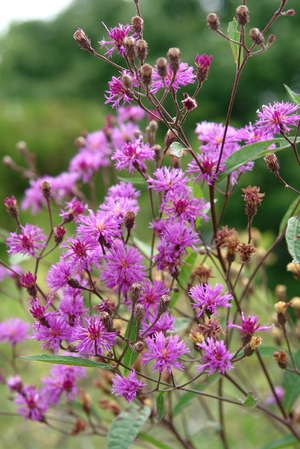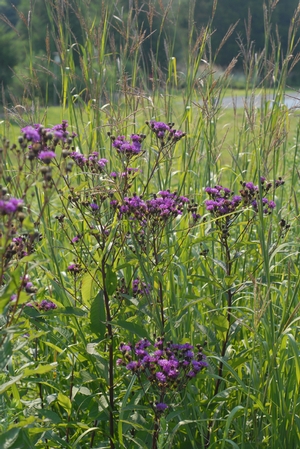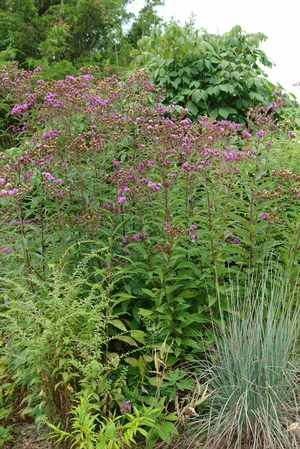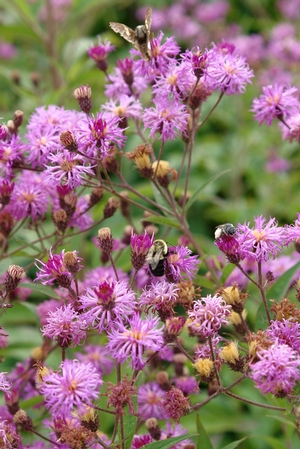Vernonia noveboracensis
Common: New York ironweedVernonia noveboracensis LP50 - 50 per flat
- Height: 4'-7'
- Spread: 2'-4'
- Spacing: 12"-18"
- Hardiness Zone(s): 5-8


Vernonia noveboracensis LP50 - 50 per flat



Thrives in full sun in moist garden soil or a boggy ditch. Needs consistent moisture to be happy, but will tolerate short periods of dryness. Due to its tall height, we would recommend this plant be placed in the back of a perennial border or cottage gardens. It is an excellent selection for wildflower gardens, meadows or naturalized areas.
In late August and early September, one can spot a deep purple haze as they drive past damp meadows, roadsides, and pastures. Vernonia noveboracensis is a lovely native that adapts well to any moist location and can be seen thriving alongside Eupatorium and Solidago in the wild, creating a beautiful patchwork late season display. Growing from 4-6’ tall and 2-3’ wide, ironweed has stiff, leafy stems topped with violet clusters of flowers. It earns the common name by ironweed’s tough nature, deep root system, and the way the plant gracefully ages to a rusty-iron patina in fall.
Vernonia novaboracensis is found in low woods, ditches and marshes from Massachusetts to Alabama and Florida. Ironweed thrives in full sun in moist garden soil or a boggy ditch. While it needs consistent moisture to be happy, it can tolerate short periods of dryness as well as average garden locations without undue stress. When planted in a happy situation, the plant can vigorously self-sow. Trimming plants back after bloom will limit their spread. If a shorter height is desired, a cut back of foliage in early summer to reduce the final height of the plant.
Vernonia novaboracensis is tolerant of many conditions including the presence of black walnut and clay soils. The plant’s flowers provide a nectar source to many species of bees, butterflies, skippers, and moths while the seedheads are eaten by birds.